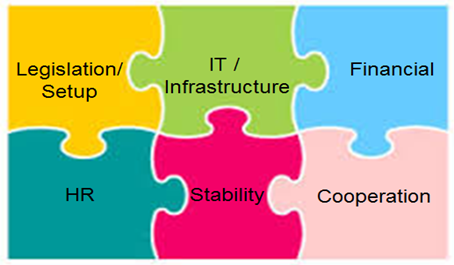The WIPO IP Office Suite is developed and owned by WIPO and is offered to IP offices of WIPO member states free of charge as part of WIPO’s technical assistance services. Before starting a project, WIPO and the IP Office (or responsible Ministry) sign a cooperation agreement that sets out the shared responsibility for implementation, terms and conditions for the use of WIPO software systems, confidentiality and other provisions. Projects are organized according to a shared responsibility model, with the aim of assisting IP offices to increase their capacities as much as possible using WIPO software solutions and to create projects with long-term sustainability. Projects are initiated based on a request by the IP office concerned. This is followed by an assessment of the needs, capabilities and suitability of WIPO software solutions for the IP offices. If both parties agree to initiate the project, a project plan is created to clarify the roles and responsibilities, resource requirements and expected outcomes. The assessment process covers the critical pre-requisites for the project to succeed, as described below:
 Image Added Image Added
- Financial: availability of capital and operating budget to start and maintain the project. Capital investment may be required up front for IT infrastructure and equipment while operating expenses are typically required for upgrades, spare parts…etc.
- Legislation: IP laws and regulations should be in place and minimum functioning IPO organization with respective staff should be present. For online services, an appropriate legislative framework needs to be in place (electronic communications law, or similar).
- Information Technologies: depending on the project and systems to be deployed, the appropriate hardware, networking, security and physical infrastructure need to be in place. The need for good internet connectivity has become now a priority so that offices can provide online services and engage in remote support and training activities.
- Human Resources: Local IT personnel for the day-to-day support of systems and infrastructure. WIPO has a profile of skills needed for local administrators who should basically have knowledge of IT and network administration activities.
- Stability: stable management and low turn-over of staff and local IT resources are important for project continuity.
- Cooperation with WIPO: The conclusion of the cooperation agreement prior to commencing the project.
|